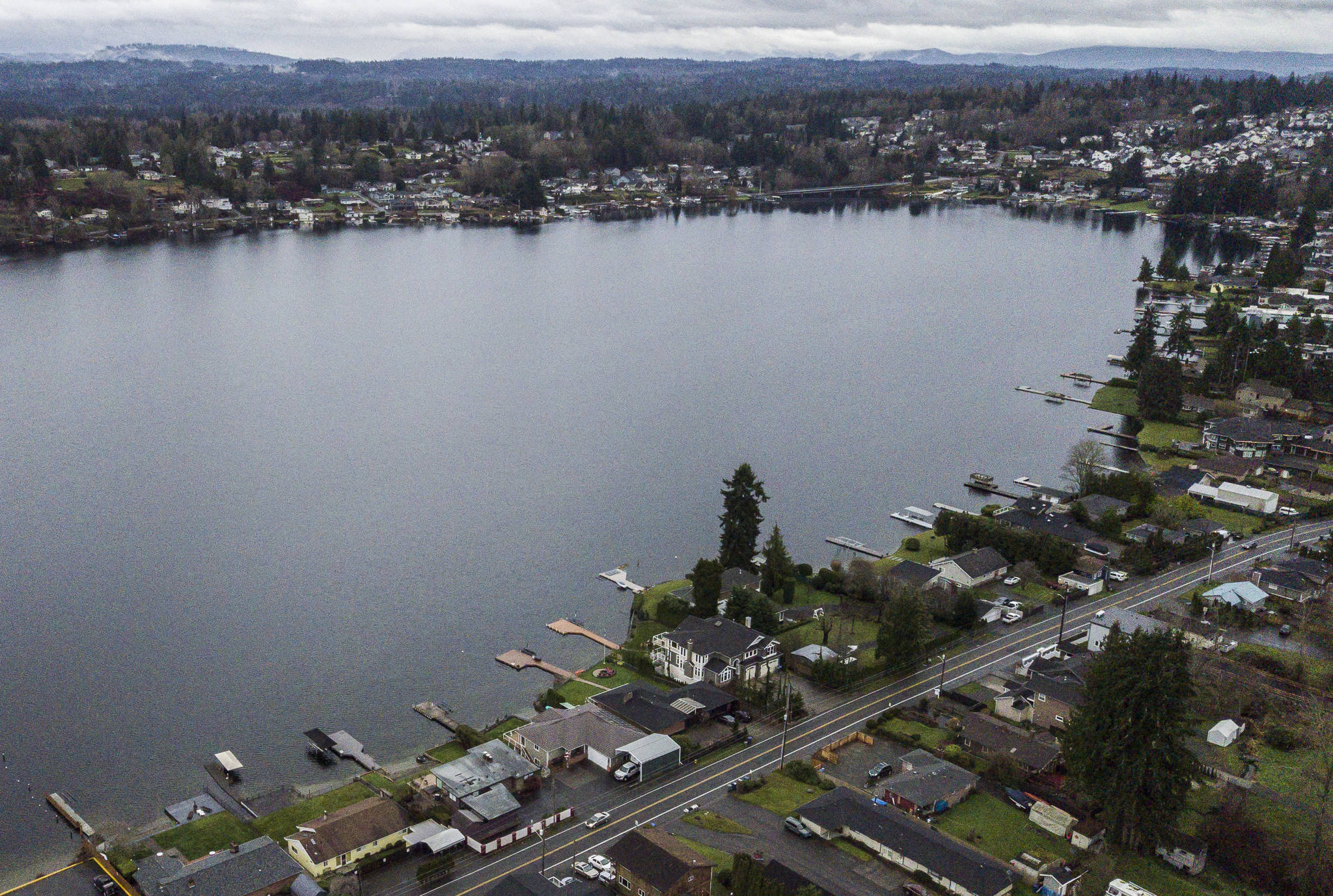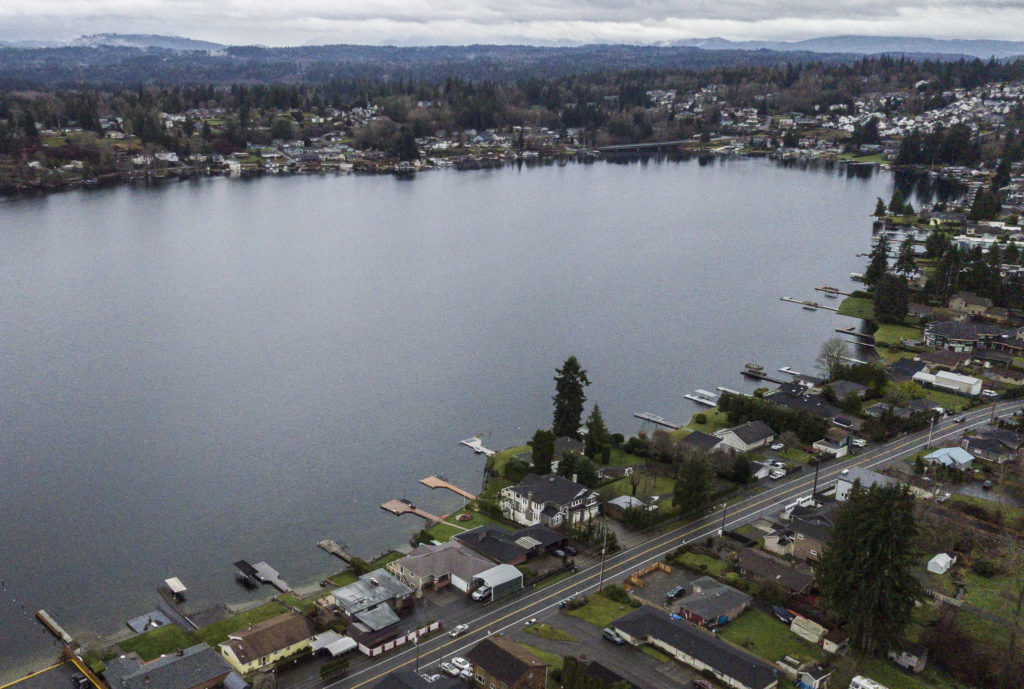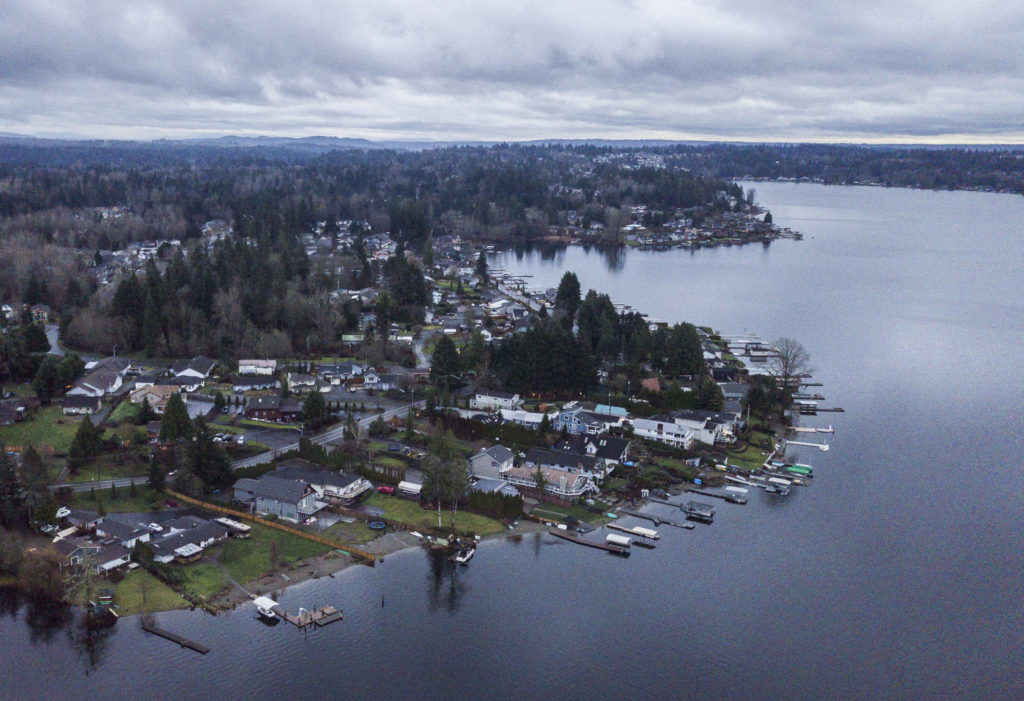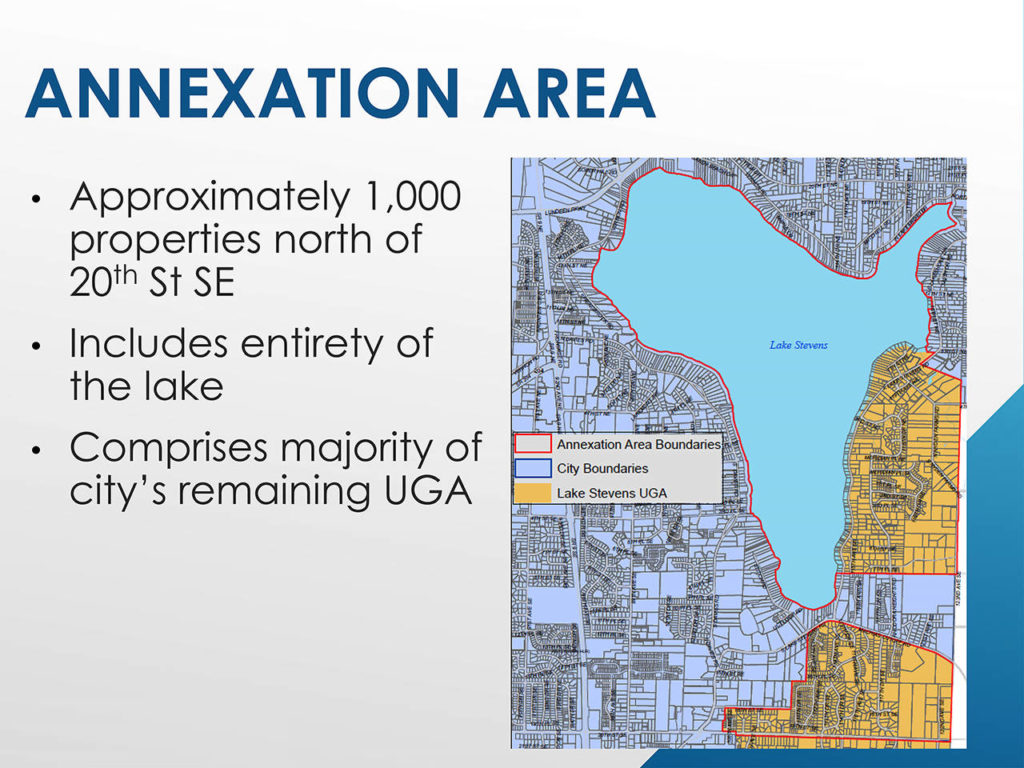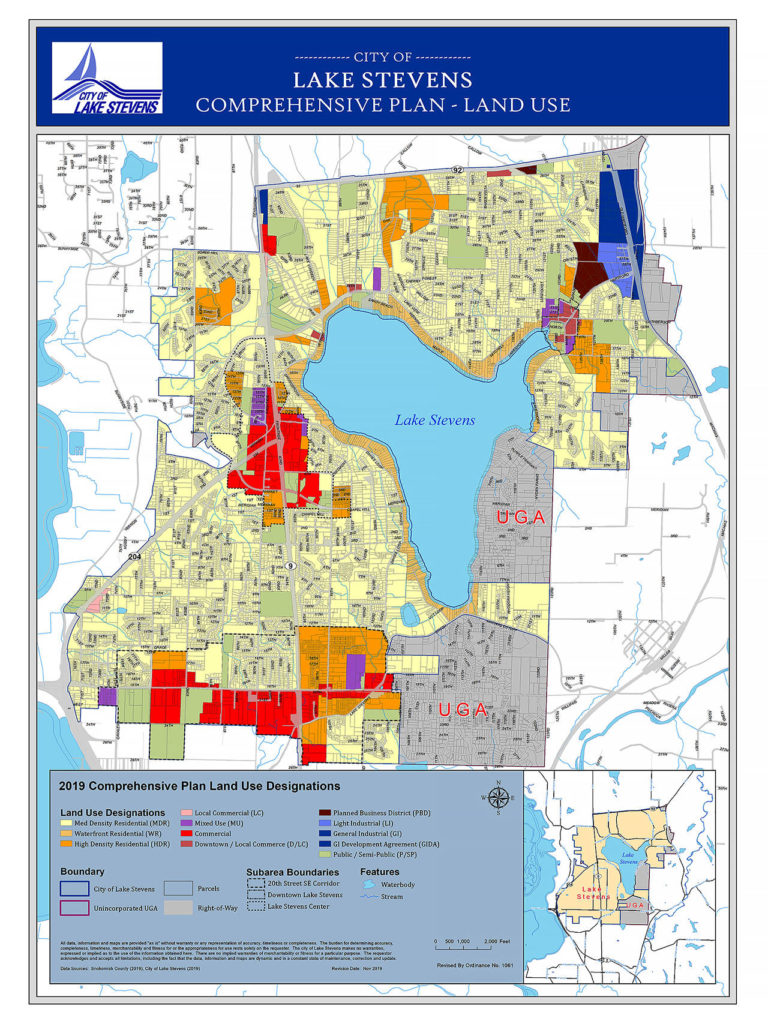LAKE STEVENS — A city near the edges of this 1,000-acre lake has been established for 60 years, but all this time the lake has been left out.
Lake Stevens, the actual body of water, could soon be part of the city that shares its name.
Thousands of people would become Lake Stevens residents if two annexations move forward, as city leaders pursue their goal of becoming “One Community Around the Lake.”
An estimated 3,000 people live in one of the proposed additions, known as the Southeast Interlocal Annexation. It would incorporate the water and 500 acres of land to the east and south of the lake.
Almost 70 acres would be incorporated in the Machias Industrial Annexation. Those who live there petitioned to become part of the city. Thirteen of 18 property owners signed on, surpassing the 60% of signatures needed, Senior Planner David Levitan said.
In the Southeast Interlocal Annexation, residents do not get to vote. The city is going through with a new process, established by Senate Bill 522 passed in June. Levitan believes Lake Stevens may be the first city in the state making use of the new law.
It says a city and county can agree to allow unincorporated land to be annexed within urban growth areas by adopting an interlocal agreement.
Both the Lake Stevens City Council and the Snohomish County Council are required to participate in a public hearing. A meeting for the Southeast Interlocal Annexation is not yet scheduled. Levitan believes the earliest it could happen is March. The City Council would need to adopt an ordinance to approve the annexation.
So far the city has hosted two online meetings for people to learn more. During a Dec. 6 session, the city answered questions for more than an hour.
Michael Jones lives in the Southeast Interlocal Annexation. He shared concerns about zoning and housing developments.
He put up with Highway 9 traffic for years while commuting to work to keep his home in unincorporated Snohomish County. He likes living in the quiet suburban environment.
He has talked with homeowners in the Rhodora Annexation, incorporated in 2019, who are upset with crowded new housing developments. He read city regulations online and was concerned there may not be ample sidewalks and abundant street parking in new developments. He worried more houses on small lots would be built in the area, squishing them all together.
“We are much better off in the county than we are in the city,” Jones said. “I understand all the services the city is going to give us, but we don’t want to live in a crowded environment.”
Community Development Director Russ Wright explained that the Rhodora Annexation was different because it was “developer-driven.”
“We wanted this to be as similar to the lifestyle you’ve enjoyed in the past,” Wright said.
The city does require sidewalks and street parking in new developments, he said, and new zoning regulations adopted in the past year expand side and back yards.
“I would say our zoning standards are equivalent to what you’ve seen in the county,” he said.
Jones felt better hearing that. He wondered if the information he found online was outdated.
“That’s one of the things the county has always given us, is neighborhoods people want to live in, that people want to raise their families in,” he said. “Based on regulations I saw, we are going to be left with clustered houses no one is going to be happy with.”
Later, another resident asked: “Why does the city of Lake Stevens want to annex this area?”
Wright replied that it has to do with the Growth Management Act, adopted by the state in 1990. It required fast-growing cities to develop master plans to manage population growth. The county was required to identify urban growth areas.
“Cities have a responsibility to annex their urban growth areas. We have an interlocal agreement with Snohomish County and an annexation plan that says the city will take its responsibility under the Growth Management Act seriously,” Wright said. “… The city’s moving forward with what the City Council and leadership sees is its responsibility to finish the ‘One Community Around the Lake,’ and be responsible to what are our mandates.”
If the annexation is approved, those who live in the now-unincorporated areas will be able to vote as if they live in the city. They would have a say in their mayor and City Council, and also could run for those positions.
Police services would no longer be provided by the Snohomish County Sheriff’s Office but instead by the Lake Stevens Police Department. Now, up to three sheriff’s deputies patrol the area at once. If the police department took over, that number would be four to six officers, leading to faster response times, according to the city.
As for the actual lake, the county is responsible for managing water quality and Sunset Cove Park. If the annexation goes through, the city takes over both those areas.
“This kind of formally brings the lake into the city and changes a few things behind the scenes as far as actual lake management,” said Levitan, the city planner.
The property tax levy rate would go down for those incorporated into the city by about 7 cents per $1,000 of assessed property value, or around $28 for a home worth $400,000.
At the same time, residents would notice an excise tax of 6% on utility bills. Excise taxes depend on the cost of each bill but are expected to add between $5 and $25 each month depending on what utilities the person has, according to the city.
Some things that will not change include school district boundaries, fire protection through Snohomish Regional Fire and Rescue, as well as water, electric and library services.
Lake Stevens has been growing since the first settlers arrived and set down roots on 160 acres on the lake’s eastern shore in 1886.
Lake Stevens is named after the first governor of the Territory of Washington, Isaac Stevens. He signed the Treaty of Point Elliot in 1855, that created reservations for local tribes and secured Native rights to land, education, health care and traditions.
Around the turn of the 20th century, Rucker Mill opened in the north cove of the lake and became known as the “world’s largest sawmill,” according to the city website. It burned down in 1919, was rebuilt, and burned down again in 1925.
Even without the mill, a town continued to grow. In 1960 it became the incorporated city of Lake Stevens. Records show the population was 1,283 during the 1970 census. Twenty years later it was 3,435. That number nearly doubled by the new millennium.
In the next decade, the population skyrocketed, reaching 28,069 by 2010. Annexations are a major reason for that jump. The city began to incorporate land in 2002.
The biggest annexation so far was in 2010, when the city’s population grew by about 11,000 and grew by 2,374 acres southwest of the lake.
The most recent was the Rhodora Annexation in the southeast corner of the lake. Neighbors had concerns with that decision after it was discovered that 29 of 80 signatures in favor of annexation were from former Mayor John Spencer. His endorsements were valid because of an “intent to annex” clause in one of the neighborhood’s homeowners association agreement.
Now an estimated 34,150 people live in Lake Stevens, state data show. The city has undergone other changes recently.
In September the City Council voted to make the mayor’s part-time gig a full-time job due to the city’s growth. One reason for that decision is that former and current mayors have worked more than required while earning a part-time salary.
Mayor Brett Gailey is the first to be in the full-time position. He was elected in November 2019.
If these two annexations go through, only four smaller unincorporated pieces of land on the outskirts of the urban growth area would be left. And after 60 years, the shores of Lake Stevens and the water itself would all be part of the city.
Stephanie Davey: 425-339-3192; sdavey@heraldnet.com; Twitter: @stephrdavey.
Talk to us
> Give us your news tips.
> Send us a letter to the editor.
> More Herald contact information.
